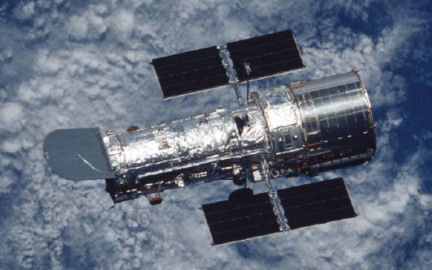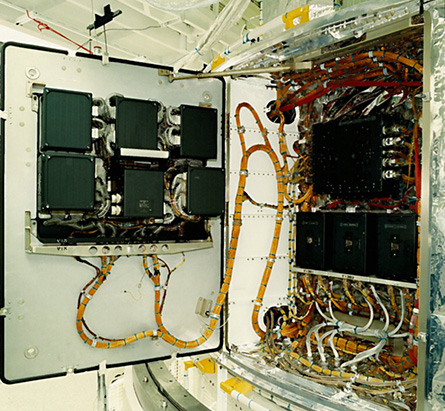NASA’s premiere orbiting observatory, the Hubble Space Telescope, abruptly stopped transmitting data September 27.


The problem comes just two weeks before the planned launch of a mission to service and upgrade the 18-year-old observatory. Efforts to troubleshoot the recent problem will delay that mission, originally scheduled to fly October 14, until at least next February, NASA scientists announced during a telephone briefing on September 29.
Hubble fell silent because of an unknown failure inside a science data formatting unit, which packages and labels data recorded by the observatory’s five science instruments, said Preston Burch, Hubble manager at NASA’s GoddardSpaceFlightCenter in Greenbelt, Md.
Normal 0 false false false MicrosoftInternetExplorer4
NASA is considering commanding Hubble to switch to a duplicate unit onboard, but doing so would require electronically reconnecting all five science instruments, posing unforeseen risks. ”The probability of failure is pretty low … but the consequences of a failure could be very high,” Burch told Science News in an interview on September 30. “There are concerns about blowing a fuse, having a relay stick, having a box fail.” In addition, the duplicate unit has been, like its broken counterpart, subject to 18 years of daily temperature fluctuations, cosmic ray bombardment and other vicissitudes of flying in space. Its health is unknown.
“Our goal is to sort out reality from overly conservative fears,” by first practicing switching sides on Hubble’s electrical replica on the ground at NASA’s GoddardSpaceFlightCenter, Burch says. If that exercise goes well, engineers would attempt to switch to the duplicate unit on Hubble sometime toward the end of next week, he adds. A successful switch would allow the observatory to resume doing science with the Wide Field/Planetary Camera 2. Scientists would also hope to restart the cooling system required to operate the Near Infrared Camera and Multi-Object Spectrograph.
Relying on the duplicate on-board science data formatter to revive Hubble would be a short-term solution. In addition, NASA is investigating whether to transport on the planned shuttle mission a duplicate device that’s spent the last 18 years on the ground. Pending extensive testing of the ground device over the next few months, astronauts could replace the failed data formatting unit with the new gadget and still have a spare unit on Hubble in case of another failure, Burch says.
He estimated that it might take a space-walking astronaut about two hours to replace the ailing unit, which would require undoing 10 bolts from a fairly accessible part of the observatory.
But because the five scheduled space walks on the shuttle mission to Hubble are already jam packed, it’s possible that some other repairs, now deemed less critical, might have to be sacrificed, he says.
The relatively high operating temperature of the formatting unit may have contributed to its failure, but scientists may not know the root cause of the problem until the device is brought back to Earth, Burch says.
This story was updated at 1 p.m. Eastern on September 30.







